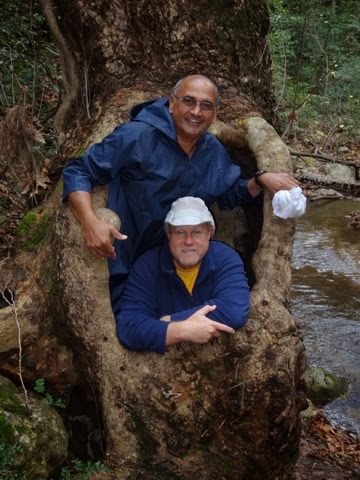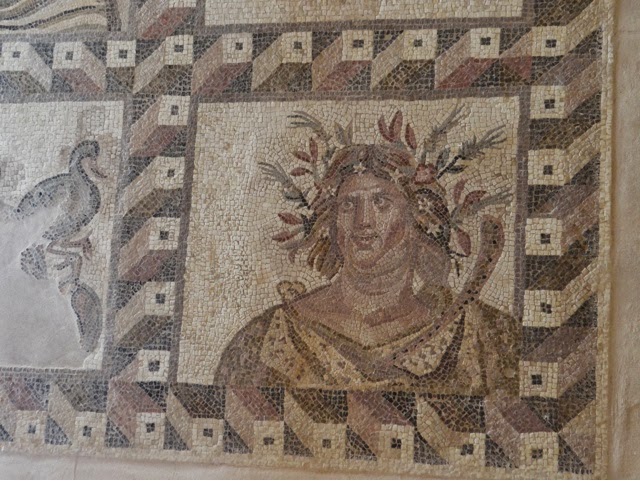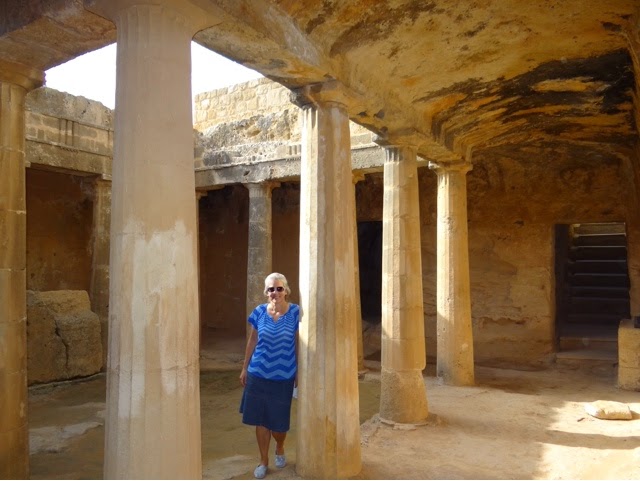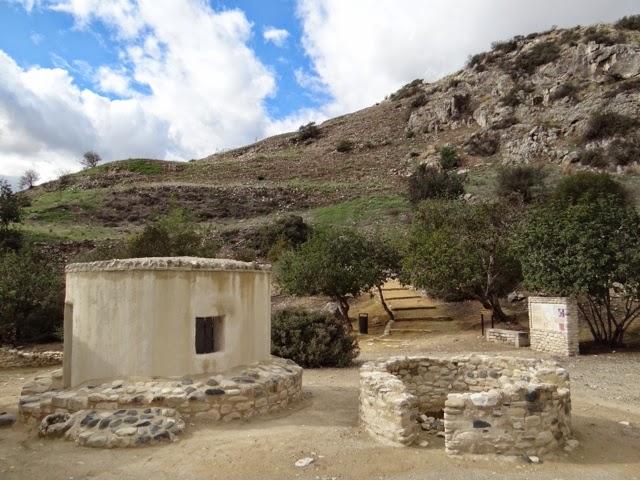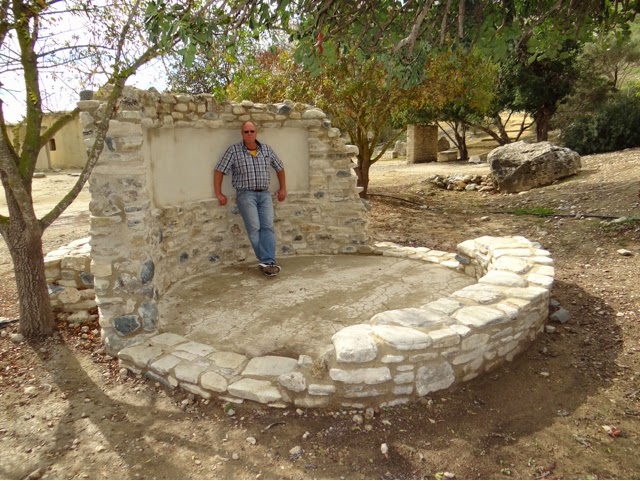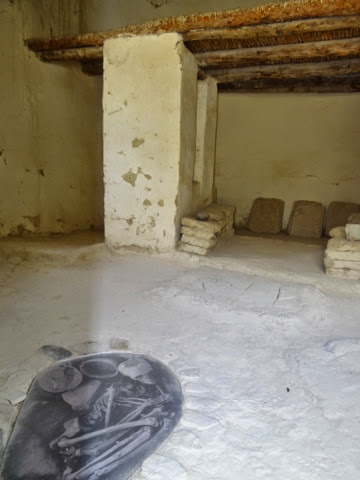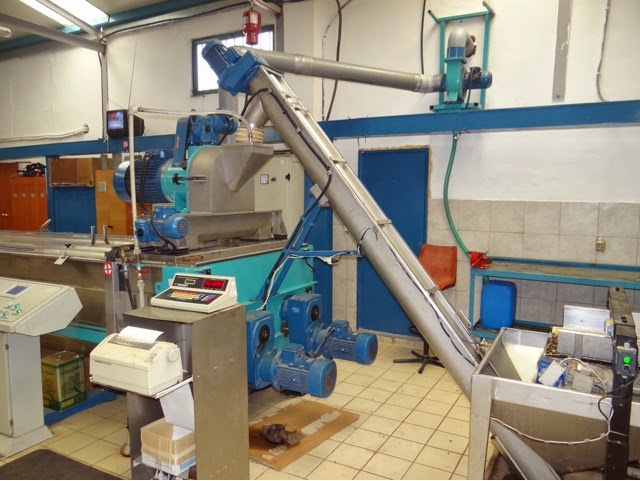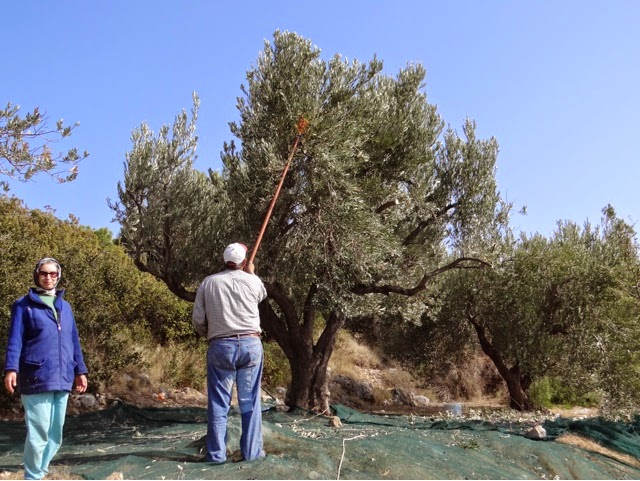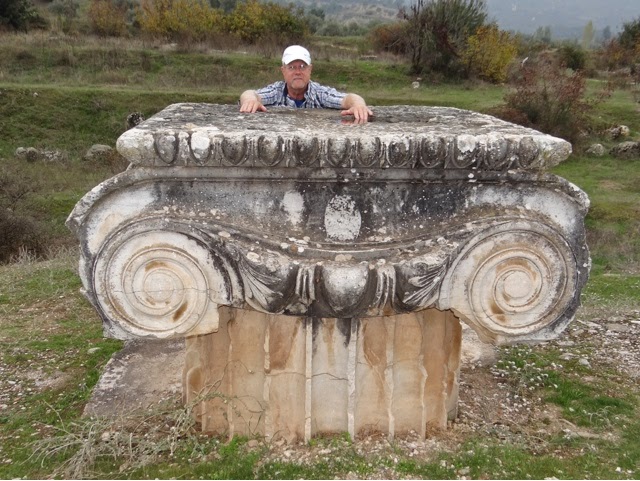Sunday, December 14, 2014
The Goonetillekes
Sunday, November 30, 2014
Paphos, Cyprus
Tuesday, November 18, 2014
Limassol, Cyprus
October 25 - We flew to Larnaka, Cyprus, and followed in the footsteps of Paul across the southern side of the island. Sort of. He started at Salamis, a bit further east, which is now across the border in Turkish Cyprus.
On day 1, we rented a car and drove to Limassol. This is not as easy as it sounds. In Cyprus, they drive on the wrong side of the road from the wrong side of the car. Do not attempt this on your own. It must be done by an expert. Smile.
On the way we stopped at the two Neolithic villages of Choirokitia and Tenta. They take us back to the dawn of civilization when man was transitioning from hunting and gathering to planting and sowing. Our ancestors lived in crude round dwellings like tipis or grass huts, and when they settled down in permanent villages, they continued to build in the round, only now they used stone and plaster. That is what we saw at both villages. They domesticated sheep, goats, and pigs, but also hunted wild deer. And while they planted wheat, barley, peas, and lentils, they also gathered wild fruit. These people did not even know the use of clay and pottery, but used stone and bone implements. The radiocarbon dates indicate the site was occupied from BC 6000 to BC 4000, but who really knows what that means in calendrical years.
One of their peculiar customs was to bury their dead in pits under the house, which were then plastered over. We find the same burial practice at the contemporaneous Anatolian village of Catal Huyuk, and sometimes in the slightly earlier Natufian peoples of Israel. In Biblical times, the Canaanites practiced foundation sacrifice in which a child was entombed in the foundation, as did their posterity, the Phoenicians. "In his days did Hiel the Bethelite built Jericho: he laid the foundation thereof in Abiram his firstborn, and set up the gates thereof in his youngest son, Segub ....." ( I Kings 16:34).
Sunday, November 16, 2014
Gregg Fleming
Thursday, November 13, 2014
Give to Him that Asks
Friday, November 7, 2014
Pressing the Olives
Wednesday, November 5, 2014
The Olive Harvest
Tuesday, November 4, 2014
John Micheletos' 1933 Trial
Athens Greece
May 15, 1934
Our dear Brother and Sister,
I am sending you a few lines today to pass on the good news of our freedom and hoping these will find you both well in every way, also the dear children.
I hope you received my last letter to you written on Nov. 13, 1933 in which I mentioned how just now we were having some trouble with the authorities who had received complaints from the bishop of the Orthodox Church. We were called to the court to give an answer for our doings as grievous complaints had been sent in against us for proselytism.
The day of the trial came (Nov. 30) and we were sentenced to a years imprisonment each, also two saints in whose homes we were having meetings. By the help of God, and the saints, after a few days in prison we all got bailed out and John made an appeal to the Court of Appeal in the said city, and the day set for the trial was the 9th of December.
We praise God for the way He undertook for us so that we all four were set free. We believe this will lead to more liberty than before and we prove that all was worked out for the furtherance of the Gospel. One of the first clerks of the first court, heard us for the first time as we gave our testimonies before judges, lawyers, police and many others (who were mostly against us and kept calling out to the judges to shut us up.) This clerk began to attend meetings and he was one of the witnesses on our side in the second trial. We would not have been without this trying experience, as it has enriched our knowledge of God and His mighty power to deliver when things outwardly looked almost hopeless and our faith and love for Him is increased as we feel doubly indebted to Him to give Him our best service to the end of the journey.
The two lawyers on our side testified of how they knew John from boyhood and watched his life (the last trial was held in John’s home city, the capital of Crete) and were assured that he preached only the truth of the Gospel and lived according to the pattern of Jesus and sought to teach others to follow Christ. One of them, an old rich and honoured man, said before the judges and with much feeling “I wish I was Mr. Micheletos.” The other testified that if it were possible for a man on earth to live a spotless life, John was that man as he was incapable of doing harm to any. He said that if all the people were like us, there would be no need for courts and prisons nor for police and soldiers as none would think of harming the other.
The president said at last (after the priests and false witnesses said what they could against us) that it was not all false that the people were saying against us as there was clear proof that those who believed our teaching had no more use for the Church of the State and its priests and ordinances. The Attorney said that if this teaching was allowed, the Bolsheviks would come and take their country. (Thought of what they said of Jesus that the Romans would come and take their nation if they let Him alone.) The judges went into their consulting room and seemed determined to punish us. One of them said (who was for us) if you punish these people, then you are going back to the ignorance and darkness of 120 years ago.
John said in his speech that if what he was doing was worthy of condemnation, he was willing to suffer, but if it were allowed he was willing to bear all the punishment, and the rest of us go free. So the judges decided to punish John and Panagates, one of the saints, and set us two sisters free, the sister saint and myself. They then pronounced this punishment in the court, but the old lawyer went up to the president at once, and begged him to set us all free, which he did at once, under the conditions that if within three years either of them were taken to court for anything, then the six months would be added.
During the five months from the first trial, we ceased not to preach and teach as God helped us to obey Him rather than man. The priest mentioned this in his speech against us. He said, “I don’t know what kind of people these are, for from the time they were condemned to a years imprisonment they have not ceased to preach, and lately the noise they were making singing could be heard outside in the street.”
One of the lawyers took him up on this and asked him in a quiet way if he thought it was wrong to sing praise to God. “Oh no,” he said, “I do not think that is wrong.” He said that John was a troublemaker. So the lawyer asked him if he knew John and if he was a bad man? “Yes, I know him and he is a good and quiet man.” Both he and other false witnesses contradicted themselves as they were so nervous.
At last one of the lawyers said to one of them, you have told so many lies that if these people were like you, they would have put you in prison for false oaths. It is wonderful how the Lord undertook and set us free. The 103rd Psalm and other such like is the language of our hearts as we realize God has done great things for us which may lead to us having a wide open door that no man can shut.
We hear from Fred Quick and Willie Phyn, who are plodding on in hope of a harvest some day in the Isle of Cyprus. Theo and John Bakeses have gone to Berea seeking to get in touch with a few there. The two sister workers Amelea and Katina are labouring some miles out of Athens and see some interest and one has decided. A few got baptized round these parts lately.
Shall close with loving greetings to you all from us all here.
Yours in Christ,
(Mrs.) Annie Micheletos



